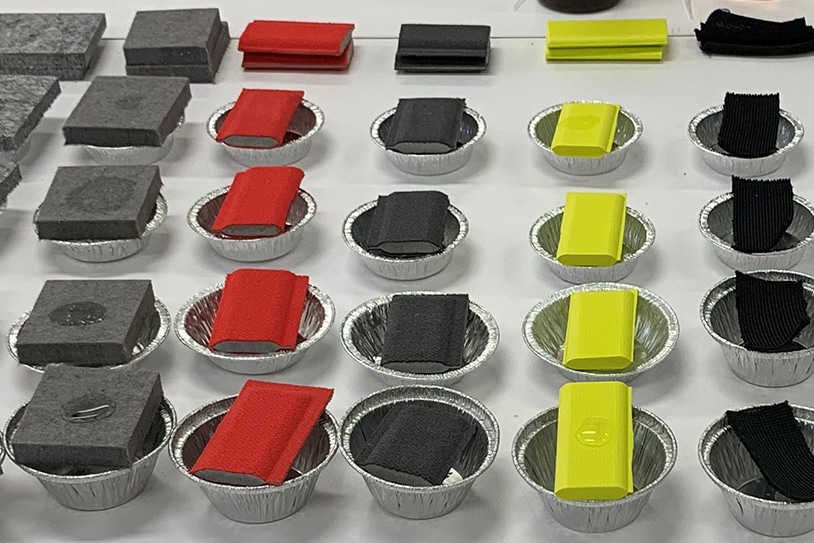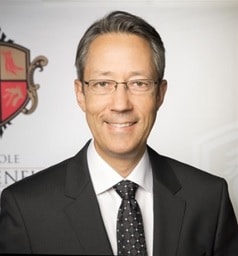
Using UVc as a Disinfectant Against COVID-19 Development Process for a Testing Method
With Covid-19, C-Difficile and other micro-organisms present in long-term care facilities, clinics and hospitals, the effectiveness of disinfection activities in care and work areas requires stringent and effective disinfection procedures. In addition to cleaning surfaces with chemical disinfectants requiring manual labor, different sanitation techniques have emerged: hydrogen peroxide atomization, electrostatic disinfection and UVc disinfection.
All of these methods have their advantages and disadvantages both from a disinfection standpoint as well as their effect on people’s safety due to relative proximity during the disinfecting process. Their respective costs also come into play. An often overlooked aspect is the impact of different disinfection processes on the various surface materials used in different work areas. In fact, although few people pay attention to this issue, there is a very wide range of materials used in these different work areas where disinfection procedures are likely to be used. The work areas themselves, the different equipment used to provide care, electronic devices, etc.; all of these materials run the risk of having their surfaces damaged by procedures aimed at destroying microorganisms. Some of the damages sustained are purely cosmetic and in many cases may not have an immediate effect. But what happens in the mid and long-term? Will the surface become more porous? Will it begin to absorb various biological fluids that standard disinfection methods can no longer reach?
Few or no methods evaluate this perhaps too often neglected aspect of disinfection. The Business Institutional Furniture Manufacturer’s Association (BIFMA) has published guidelines to evaluate the impact of different processes/disinfectants: BIFMA HCF 8.1. This paper―which was drafted by several committee members from the U.S. healthcare community―proposes testing methods to validate the impact of these processes/chemical products commonly used to disinfect different materials used in healthcare.
HCF 8.1 is a recommendation, not a standard. It really cannot be used for compliance purposes because, in many respects, the testing protocols do not offer the precision required to perform formal testing. For example, in Section 6 different cleaners are specified to assess a surface’s resistance to liquid cleaners. One of them is hydrogen peroxide (HP). According to the note at the bottom of the page, different HP solutions can be used to test a surface, including an acid-activated version. These different solutions will attack surfaces at varying degrees based on their actual composition and concentrations (none of these parameters are specified).
Another example is Section 9: Resistance of furniture to UV light. This section was created to assess the resistance of materials to UV light used by certain disinfectant equipment that floods surfaces with UV-c light. For the test, HCF 8.1 requires that a germicidal light source capable of providing radiant energy in the UV-c (200-280nm) spectral wavelength region with a majority or radiation at 254 nm. The document also stipulates that the recommended exposure rate (irradiance) should be between 2 to 6 milliwatts per square centimetre (mW/cm2) in order to have a representative exposure. Although there are devices for accelerated ultraviolet aging tests to simulate sun exposure, there is no device to assess the accelerated aging of materials in UVc. The reason is quite simple; there is no natural occurrence of UVc on the planet’s surface because our atmosphere completely filters it out.
We, therefore, wanted to find a device that would allow us to conduct accelerated UVc aging. UVc disinfection devices do exist on the market for commercial/industrial applications, however, the irradiance is much higher than the 2-6mw/cm2 specified in HCF 8.1. You might tell me that HCF 8.1 also offers an alternative method: ASTM G-155 to conduct this test. However, in my December 2019 blog, I explain why this alternative is not viable and the technical reasons that support my humble opinion on this issue.
Our research has allowed us to find a device used in biology and biochemistry to attach DNA or RNA to different membranes. This device allows us to meet BIFMA’s requirements for aging using UVc. To ensure its performance, we mapped its exhibition enclosure using a UVc spectrophotometer.
Different materials respond differently to UVc; what should the length of materials exposure be to simulate 5, 10 years of use in hospitals? To find out, we are in the process of purchasing different materials commonly used in hospital settings and will begin with an incremental exposure to UVc at an intensity stipulated by HCF8.1 to determine the rate of acceleration of the aging method we are trying to develop.


